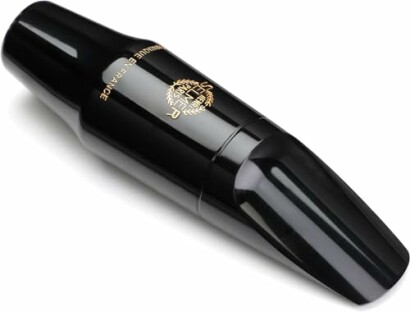
An In-depth Look at Custom Saxophone Mouthpieces
Key Takeaways
- Custom saxophone mouthpieces can greatly influence sound quality and player technique.
- Materials such as rubber, metal, and ebonite each offer distinct tonal characteristics.
- The shape and dimensions of the mouthpiece affect airflow and resistance, impacting playability.
- Choosing the right mouthpiece is essential for musicians looking to enhance their sound.
- Popular options include the Vandoren SM613B T75 Jumbo JAVA and the Selmer S-80 C* Mouthpiece.
Welcome to our exploration of customizable mouthpieces for tenor saxophones! Whether you’re a novice musician or an experienced player, understanding mouthpieces is critical for enhancing your overall sound and technique. In this article, we’ll delve into the different materials, shapes, and how they influence your saxophone playing experience. We’ll also highlight some top products to consider for your setup.
Understanding Saxophone Mouthpieces
A saxophone mouthpiece is a crucial element of the instrument that can significantly affect sound production and playability. Custom mouthpieces can vary in several ways, including:
- Material: Common materials include rubber, ebonite, and metal.
- Shape: Different shapes influence the tone and resistance.
- Tip Opening: The width of the mouthpiece tip can alter airflow.
- Facing Length: This is the distance from the tip of the mouthpiece to the point where it curves.
Materials Used in Mouthpieces
| Material | Characteristics | Sound Profile |
|---|---|---|
| Rubber | Warm, full tone; good resistance | Great for beginners |
| Ebonite | Rich sound; popular among jazz musicians | Bright and resonant |
| Metal | Bright and focused tone; less resistance | Powerful projection |
Shapes and Dimensions
The shape and dimensions of a mouthpiece greatly affect how the saxophonist plays. Here’s an overview:
- Standard: Often preferred for classical playing.
- Jazz: Typically has a wider tip opening and longer facing to allow for expressive playing.
- Custom: Tailored to the individual's playing style and comfort, offering unique dimensions.
Feature Spotlight: Top Mouthpieces for Tenor Saxophones
Here are two notable custom mouthpieces that can elevate your playing experience:
Vandoren SM613B T75 Jumbo JAVA Tenor Saxophone Mouthpiece
Crafted from ebonite, this mouthpiece features a 265-micron tip opening, making it ideal for various genres, especially jazz.
Learn MoreSelmer S-80 C* Mouthpiece for Tenor Saxophone
Designed with a square cross-section and a tip opening of 1.8, this mouthpiece is perfect for advanced players looking to step up their performance.
Learn MoreHow to Choose the Right Mouthpiece
When selecting a mouthpiece, consider the following factors:
- Playing Style: Your genre can dictate what material and shape will work best.
- Comfort: Ensure the mouthpiece feels comfortable in your mouth.
- Sound Preference: Test mouthpieces to identify the sound profile you prefer.
- Budget: Determine how much you’re willing to invest - quality often comes at a higher price, but it’s worth it for serious players.
Maintaining Your Saxophone Mouthpiece
Proper maintenance is essential for preserving the quality of your mouthpiece. Here are some maintenance tips:
- Regularly clean the mouthpiece with warm water and a mild soap.
- Use a soft cloth to dry it thoroughly after cleaning.
- Store it safely in a case to avoid damage.
- Inspect for wear and tear periodically to ensure optimal performance.
Enhancing Your Learning Journey
As you explore the world of tenor saxophones, don't forget to check our resources for further learning:
- Tenor Saxophone Buying Guide
- Tenor Saxophone Maintenance
- Playing Techniques for Tenor Saxophone
- Saxophone Accessories
- Classical Saxophone Pieces and Composers
Tips for Beginners
Here are some useful tips for beginners looking to choose and use mouthpieces:
- Start with a basic rubber mouthpiece to develop your foundational skills.
- Experiment with different brands and styles as you progress.
- Seek advice from teachers or other musicians to find what works best for you.
- Don’t rush the process; finding the right mouthpiece takes time.
Conclusion
Custom saxophone mouthpieces are an integral part of a musician's journey. The right mouthpiece can enhance your sound and technique, providing a more enjoyable playing experience. As you consider upgrading your mouthpiece, explore your options and choose one that fits your needs and preferences.
For more information and guidance on saxophones and accessories, visit our Buying Guides section for comprehensive insights.

